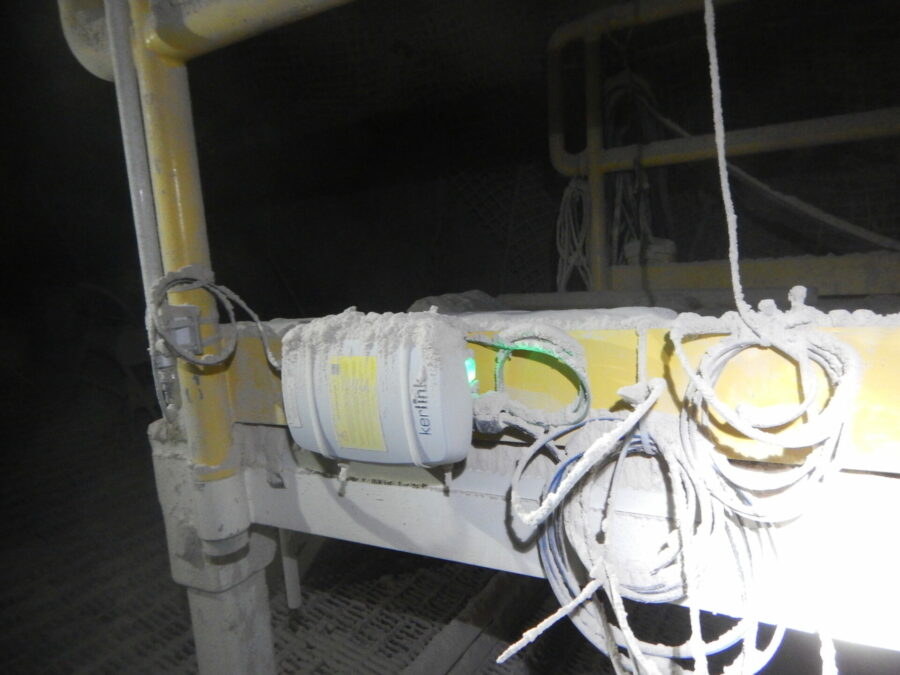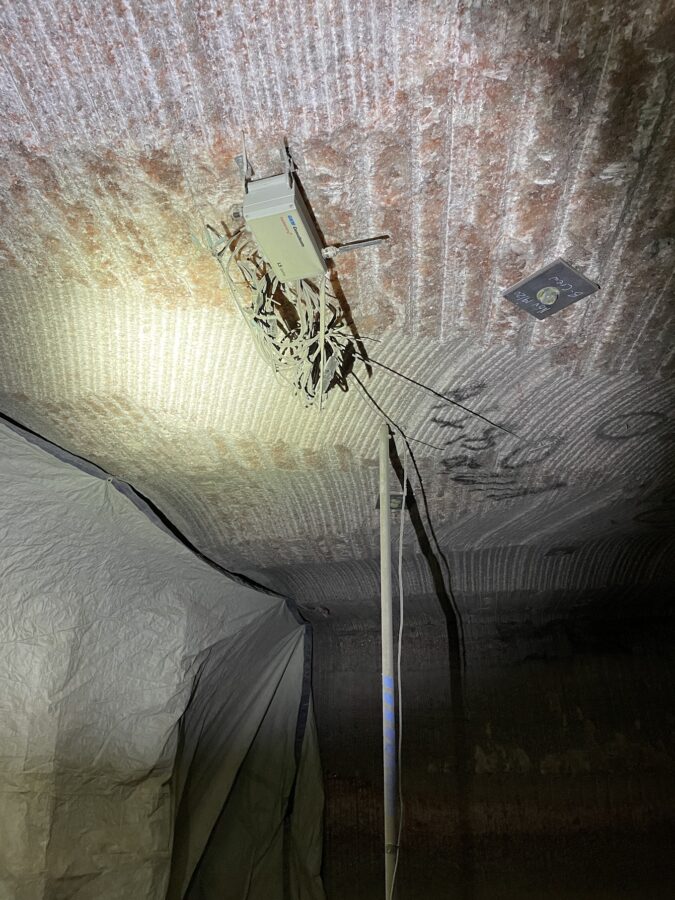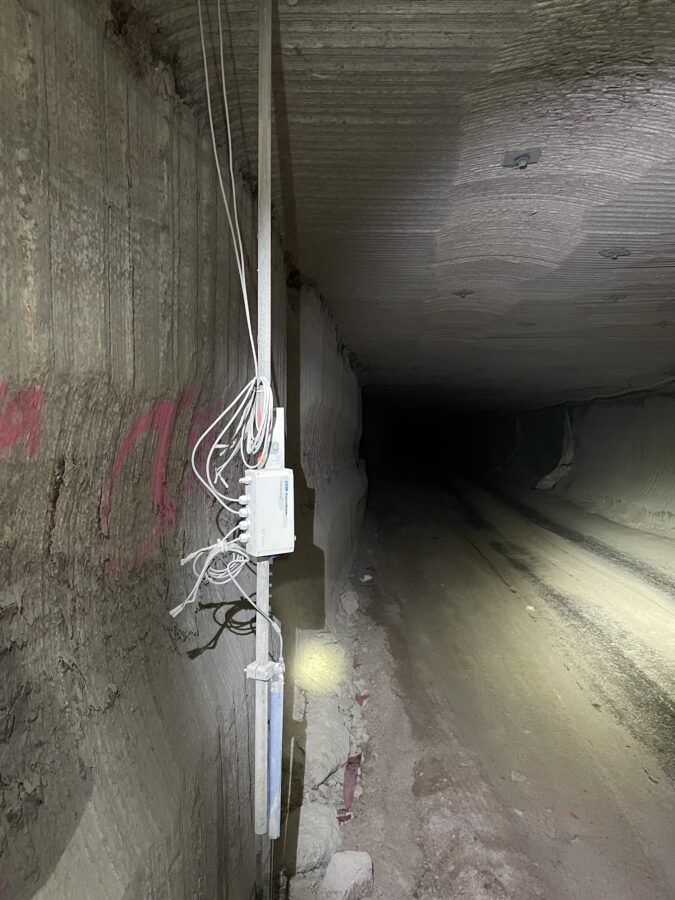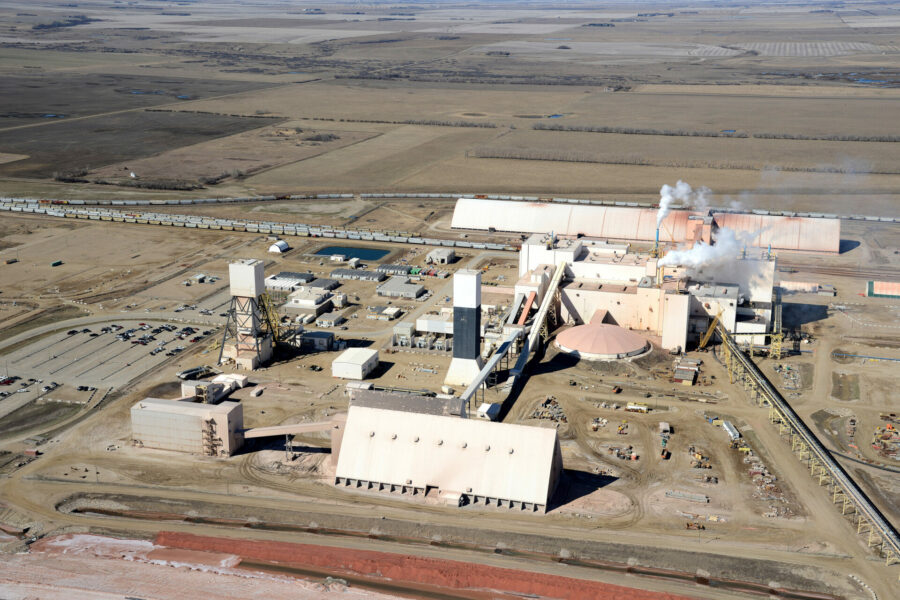Worldsensing loggers read potash mine laser convergence meters
Challenge
Underpinning the food that we eat is a vast industry dedicated to producing fertilizer. And Nutrien is one of the largest companies in that industry, distributing more than 27 million tonnes of potash, nitrogen and phosphate products for agricultural customers worldwide. In Canada, Nutrien has six potash mines and is looking to increase production as demand for fertilizers continues to soar. The potash is extracted from soft rock, which means tunnels have to be monitored carefully for signs of convergence and sag.
Traditionally this was done using tape extensometers and displacement sensors, but these were complicated, expensive and challenging to use because they could obstruct the tunnels. To overcome these challenges, Nutrien decided to adopt laser displacement sensors instead. These cost about a third of the price of a tape extensometer. All the company needed to do was find a reliable and cost-effective way of getting the data from the displacement sensors underground to the visualization systems above ground.
Solution
In 2019, Nutrien’s geotechnical advisers, GKM Consultants, recommended Worldsensing Piconodes and four-channel analog nodes to read ground movement monitors in the company’s mines. The devices were valued for their ease of installation and reliable operation. Around the same time, Nutrien acquired a laser convergence meter to measure a high-convergence area on a trial basis, and found the device produced excellent results. As the use of laser convergence meters grew, so did the need to collect the data from the sensors.
Today, Nutrien uses Worldsensing data loggers not only to relay data from the laser convergence sensors but also to capture information from displacement transducers and—using digital nodes—YieldPoint d-MPBX multiple point borehole extensometers. The sensors, data loggers and gateways are regularly redeployed into new active mining areas. Readings are sampled at rates of between once an hour to once a day, depending on the criticality of the area in question. Data is collected via CMT Edge.
Benefits
The Worldsensing equipment allows Nutrien to receive regular data on convergence and sag that can indicate the possibility of a tunnel failure in the coming days or weeks. This is a significant improvement on the frequency that could be achieved with manual readings. It also minimizes the chances of human error in readings, as well as being more cost effective than tying up engineers in the data collection process.
A further improvement is that using data loggers with laser convergence meters allows critical earth movements to be tracked without obstructing the passageways that mining teams need to move through. Nutrien’s Canadian potash mines are now equipped with dozens of analog nodes, Piconodes and Laser Convergence Nodes. Most of the mines also have gateways to collect the data wirelessly. The gateways can pick up data with a range of close to 3 km in the straight potash tunnels.
About GKM Consultants
GKM Consultants was founded by distinguished engineers who felt there was a need to bring together instrumentation technologies and complex monitoring assignments into a single turnkey servicing company for the benefit of their clients. GKM Consultants is known internationally for its expertise in designing, installing, and implementing geotechnical monitoring solutions. GKM bridges instrumentation technologies and complex monitoring requirements into turn-key solutions.
Are you planning a project?
Get in touch with us to share your needs and project requirements. We are experts in engineering and IoT and are happy to help.



